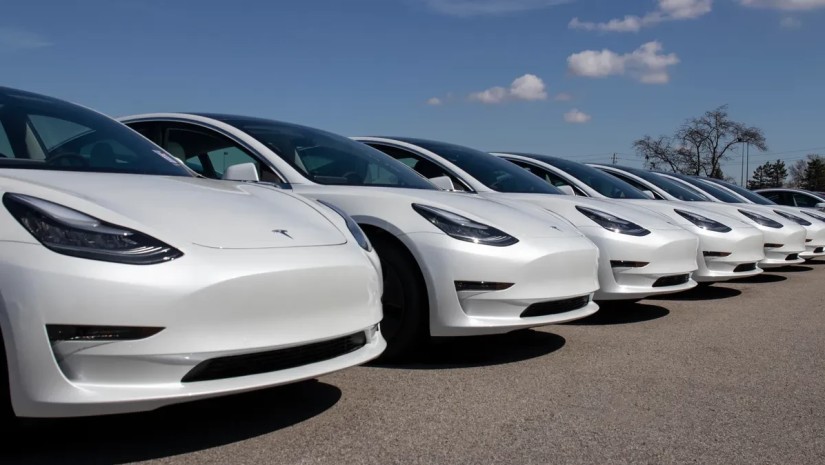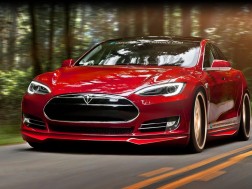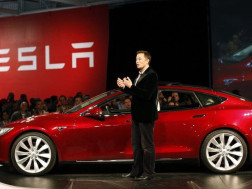Tesla posted its first annual drop in sales since the first year of the pandemic, as increased electric vehicle competition from Chinese and Western automakers ate into demand.
CEO Elon Musk’s electric car company reported it built 433,000 vehicles but delivered only 387,000. That’s down from the 484,507 cars it delivered in the final three months of 2023, and it’s also down from the 422,875 vehicle sales in the first quarter of last year.
Tesla has responded to increased competition by cutting prices. Although Tesla is more profitable than traditional automakers, the price cuts have been squeezing the profit margins that helped boost the stock. Investors’ expectations that the company would grow sales in the future had also been supporting Tesla’s lofty stock price, which made it the world’s most valuable automaker.
Shares of Tesla fell 5% Monday and have lost more than a third of their value this year.
Tesla attributed the decline in volumes partially to the production ramp-up of the updated version of Model 3 at its Fremont factory and to factory shutdowns resulting from ships from China to Europe being diverted away from the Red Sea due to attacks there. It also cited a week long closure of its German factory due to an arson attack.
But the increased competition in the EV space is a big factor in the decline in demand. In the fourth quarter, Tesla lost the title of the world’s best-selling maker of EVs to Chinese automaker BYD.
Yet even with the sharp drop in sales for Tesla, it reclaimed the global title from BYD, which suffered an even bigger drop in sales of pure battery-powered vehicles compared to the end of last year. BYD reported it sold only 300,114 EVs, not including hybrids, in the first quarter, down from the 525,409 it sold in the final quarter of 2024.
But unlike Tesla, BYD’s EV sales were up 13% compared to the year earlier period, when it sold only 264,647 battery-powered cars.
Tesla is facing new competition from legacy automakers in western countries as well, most of which are introducing new EV models as they move forward with plans to shift from traditional internal combustion engine vehicles to electrics.
Toyota hasn’t reported first-quarter global sales yet, but it reported that its pure EV sales for the first two months of the year rose 61%, albeit to a still modest 14,504 vehicles.
General Motors reported Tuesday that its US EV sales fell 22% in the quarter compared to a year earlier due to its decision to discontinue the current version of its best selling US EV, the Chevrolet Bolt. But its other newer EV models – the Cadillac Lyric, the GMC Hummer SUV and pickup, as well as the EV versions of the Chevrolet Blazer and Silverado – combined to post an 841% jump in sales, a bright spot in a disappointing quarter for GM overall.
Analysts had been expecting sales of as many as 440,000 to as few as 414,000 vehicles, said Dan Ives, analyst with Wedbush Securities, who has been bullish on Tesla shares. While he said he remains bullish long-term, he called the quarter “a train wreck into a brick wall quarter.”
Ives said the biggest problem is likely Tesla’s sales in China, which he estimates fell 3% compared to a year earlier. He described Chinese demand as “very soft coming out of the gates for 2024.”
“While we were anticipating a bad first quarter, this was an unmitigated disaster that is hard to explain away,” he said in a note to clients. “We view this as a seminal moment in the Tesla story for Musk to either turn this around and reverse the black eye first quarter performance. Otherwise, some darker days could clearly be ahead that could disrupt the long-term Tesla narrative.”
While overall demand for EVs still is growing rapidly - US EV sales rose 40% last year and topped 1 million vehicles for the first time - the pace of growth has been less than some forecasts. That has prompted some traditional automakers, such as General Motors and Ford, to pull back on their EV production plans.
Source: CNN
















